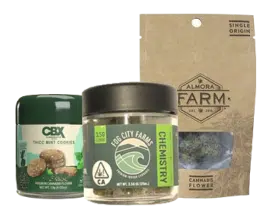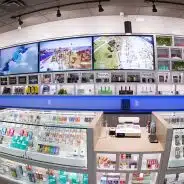Hemp and cannabis are often confused as the same thing. While they both come from the same species of plant, Cannabis Sativa L, they differ in several important ways. Here’s what you need to know about the difference between hemp and cannabis.
How Hemp and Cannabis Are Grown
Hemp and cannabis (also called marijuana) come from the same cannabis plant, but they are grown very differently.
Hemp is very simple to grow. Plants are grown close to one another and can thrive in a variety of climates. They can be grown without the use of chemicals or fertilizer, which means hemp can be grown organically.
Cannabis, on the other hand, requires careful cultivation. Everything must be controlled – temperature, humidity, feeding. Plants must also be grown far apart from one another. Male plants are separated from female plants.
Physical Traits
At first glance, hemp and cannabis might look the same, but they have some rather distinct physical differences. Hemp is typically tall and thin. Leaves are skinny and tend to cluster at the top.
Cannabis is much shorter and plumper, resembling a bush. The leaves are either broad or tight buds.
Chemical Makeup
Hemp and cannabis plants don’t just look different. They have some distinct chemical differences as well. While they both contain cannabinoids, the levels are very different.
Hemp plants contain a minuscule amount of THC, typically less than 0.3%. It does, however, have a high CBD content, which provides significant benefits. The low THC levels mean that hemp can’t produce any psychoactive effects.
The content of THC in cannabis varies, typically ranging from between 5% and 20%. Some plants have content of up to 25% to 30%. CBD content also varies based on the specific plant.
The legality of Hemp and Cannabis
Both hemp and cannabis were illegal at one point. They were both listed as controlled substances. A farm bill in 2018 removed hemp from the Controlled Substances Act. Even so, some states have outlawed the plant on the state level.
Cannabis is still listed as a Schedule I controlled substance, making it illegal on the federal level. Many states, however, have legalized its use. 33 states and Washington DC have legalized cannabis for medical use. 11 of those states, along with Washington DC, have also legalized it for recreational use.
Hemp and Cannabis Uses
Hemp has a variety of uses. These include:
- Fabric and clothing
- Construction materials such as thermal insulation and bricks
- Industrial materials
- Food (hemp seeds, hemp oil, pasta)
- Skin creams, hair care products, and other cosmetics
- CBD products (hemp-derived CBD oil, creams, etc.)
Uses for cannabis are more limited. The flowers of the female plants are cultivated for medicinal and recreational use. Cannabis can be used in a variety of ways, though. It can be smoked, vaped, put into food and eaten, made into a tincture, or infused into body care products.
Hemp-Derived CBD Vs Cannabis-Derived CBD
CBD is found in both hemp and cannabis and provides numerous incredible benefits. Hemp-derived CBD contains no more than 0.3% THC. Since it’s not a controlled substance, you can find products for sale in many stores. You cannot get high from hemp-derived CBD products.
Cannabis-derived CBD is still a controlled substance. State laws vary on its use (whether it can be used recreationally, medicinally, or not at all) but it can only be obtained from a licensed dispensary. You must be an adult and may require a recommendation from your physician. Depending upon the amount of THC in the product, you may experience psychoactive effects.
While hemp and cannabis are both derived from the same plant, they look different, have a different chemical makeup, and have vastly different uses. Knowing the difference can help you to find quality products that suit your needs.





















